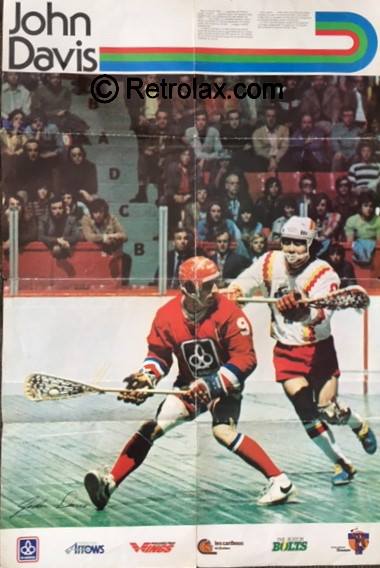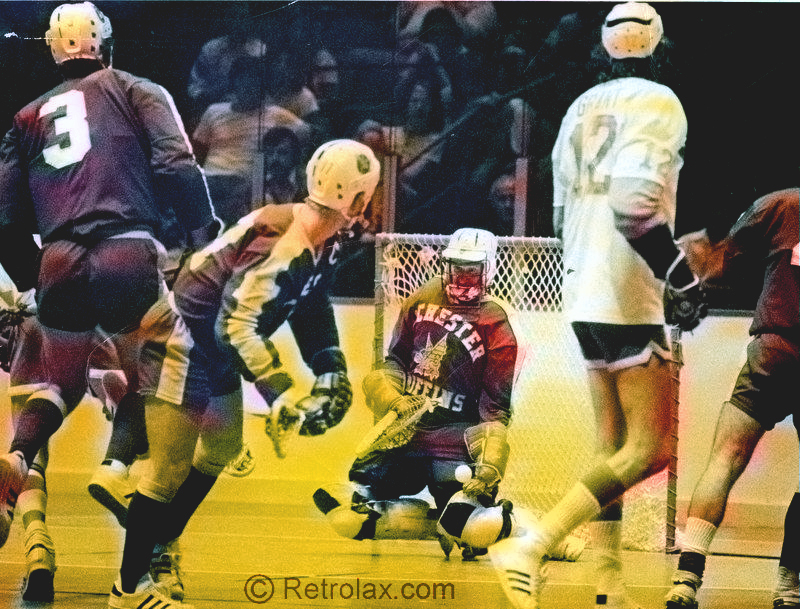By CURT SMITH; D&C Sportswriter- May 16th, 1974

Tad Potter (L), owner of the Rochester Griffins with Butch Keegan (R).....photo courtesy of the Butch Keegan Collection
Uncertainty is the key word surrounding this week’s inaugural opening of the National Lacrosse League. While the league has an ample number of bodies and suitable places to put them, few observers have any notion of how balanced, or unbalanced, the teams will be.
Even more, there is the overriding, perhaps crucial, question of how box lacrosse will be supported in the NLL’s six cities.
Since its inception three months ago, the new league has worked to land enough personnel to staff its teams. Now the situation has approached a point where there is a surplus of players.
During the same period, the NLL obtained adequate, in some cases, excellent playing facilities. They range from the 6,500-seat Syracuse War Memorial to the 17,000-seat Spectrum in Philadelphia. Montreal’s Forum and Toronto’s Maple Leaf Gardens are two other NLL arenas. The league’s balance and attendance are unknowns.
At first glance, the NLL talent seems to be separated into two classes, the haves (Montreal, Toronto and Rochester) and have-nots (Syracuse, Philadelphia and Maryland). That situation may be great for crowd1 appeal here, but it’s unlikely to spur the league’s overall attendance.
The preseason sales picture is spotty. Philadelphia has sold over 4,500 season tickets, Toronto has traditionally been a fine box lacrosse city, and Montreal expects a 16,000 near-sellout for this week’s season opener.
Rochester’s Griffins have sold only 300 tickets for their first game, however, while Syracuse and Maryland are having even more trouble.
Even if some team’s attendance suffers initially, the NLL retains one huge advantage which previous box lacrosse league didn’t possess. The league is dotted with National Hockey League owners, people with the money to handle financial setbacks.

Barry Ashbee (L), John Ferguson (C) and Ed Tepper (R)
Detroit Red Wing owner Bruce Norris is associated with Toronto’s NLL club. The St. Louis Blues’ Salomon family, along with former hockey star John Ferguson, operate the Montreal team. Tad Potter, owner of the NHL Pittsburgh Penguins, is the Griffins’ financial backer.
These men, and the money behind them, guarantee the league’s survival for this year. If any city goes under financially, the other clubs must bail that club out. To operate past this season, however, the league will have to stay close to the break-even point. For instance, the Griffins must average 3,500 fans a game to break even financially.
Crowds should rise if the teams are closely bunched. The chances of that occurring are so-so. Based on preseason play, several NLL coaches say Montreal, Toronto and Rochester are the class teams, with the other three clubs bringing up the rear.
There is a scarcity of nationally-recognized players. The only one of real note is Rochester’s Rick Dudley, who plays with the NHL Buffalo Sabres. To offset the lack of name players, the NLL is promoting promising draft choices such as the Griffins’ Kevin Parsons.
On other factor is the weather. How well will the league draw during the summer months?
Questions like that guarantee enough uncertainty to keep grandstand coaches busy during the 40-game NLL schedule, which extends from this week through August 28.
Box Lacrosse-What it's all about...







